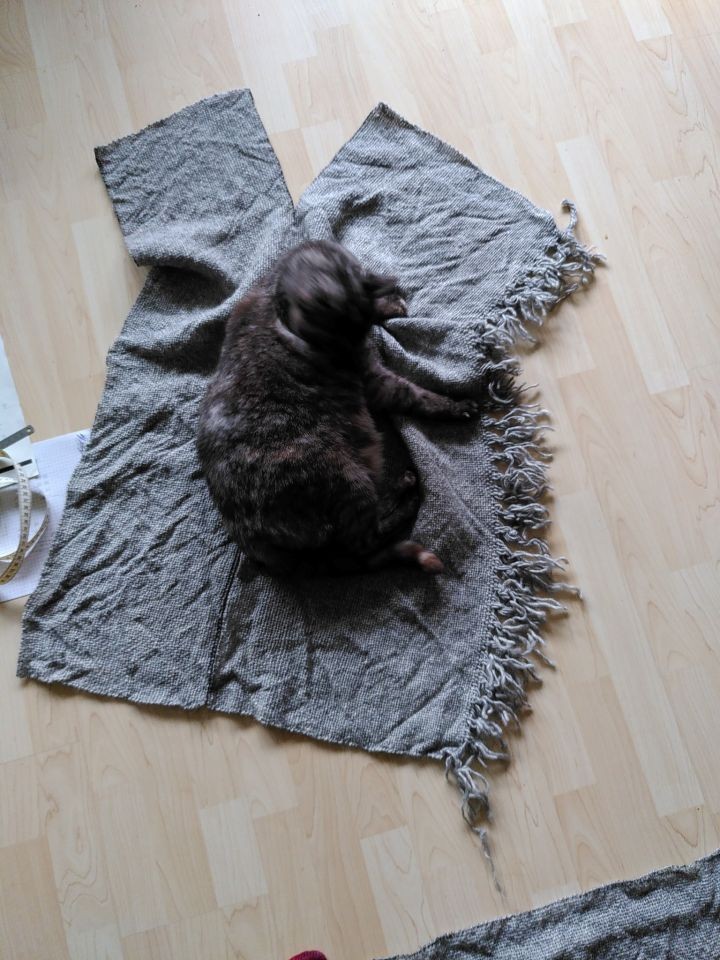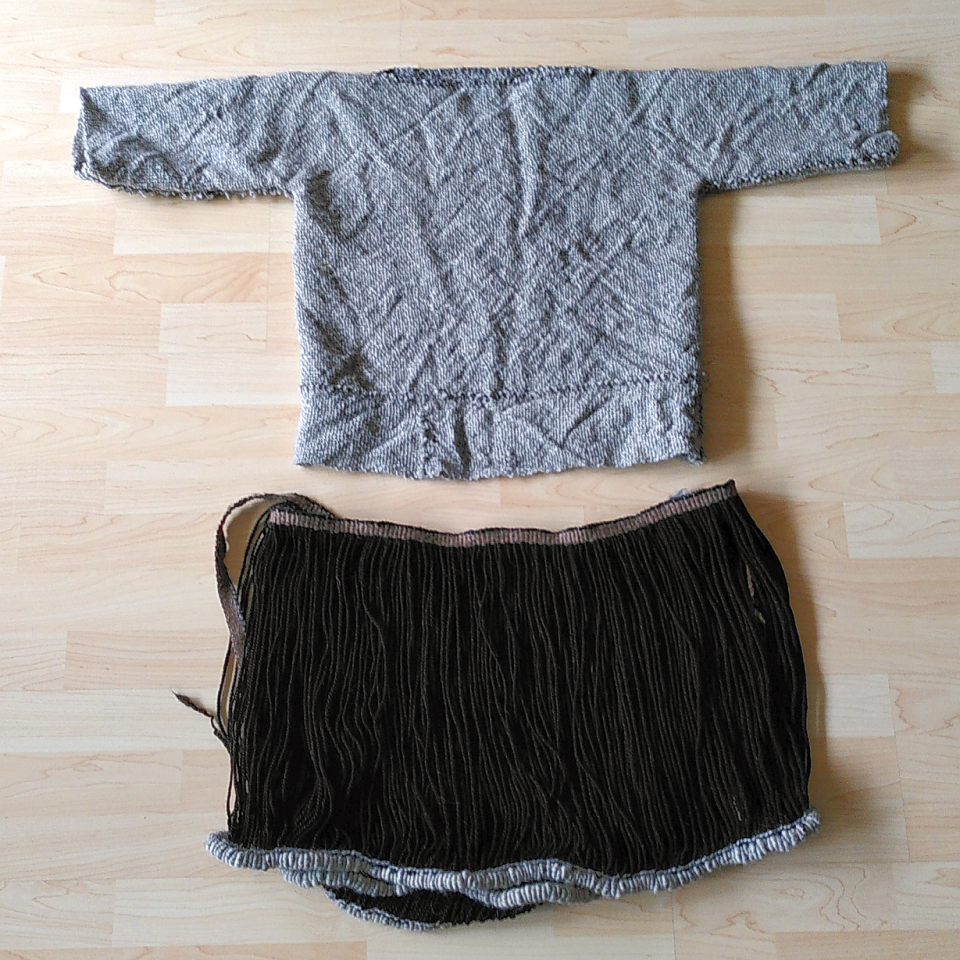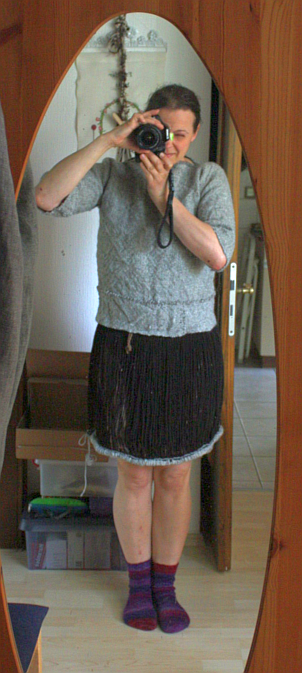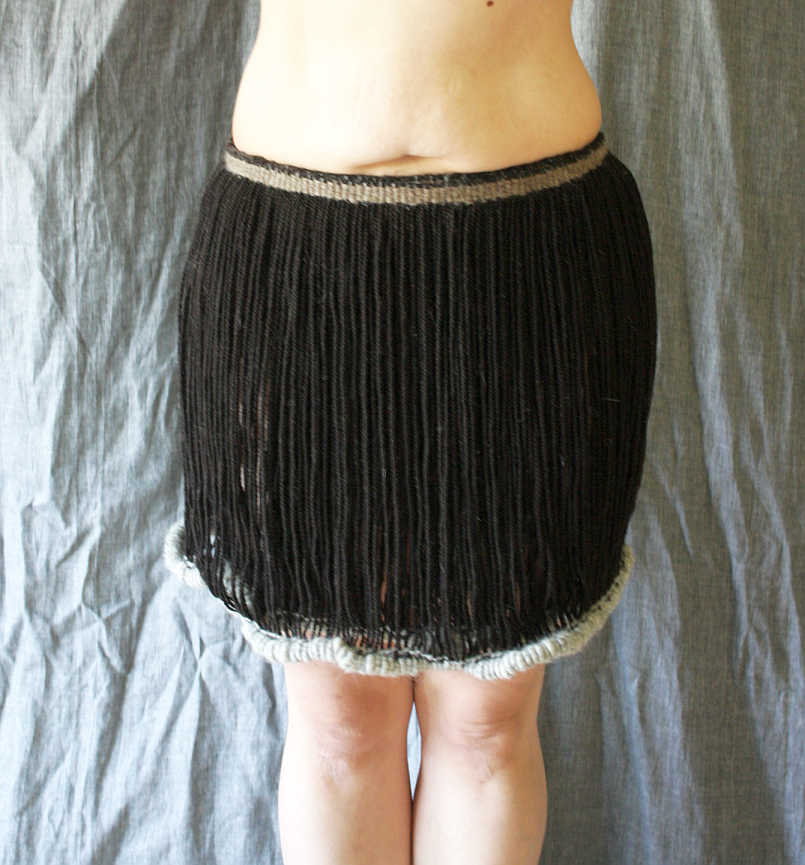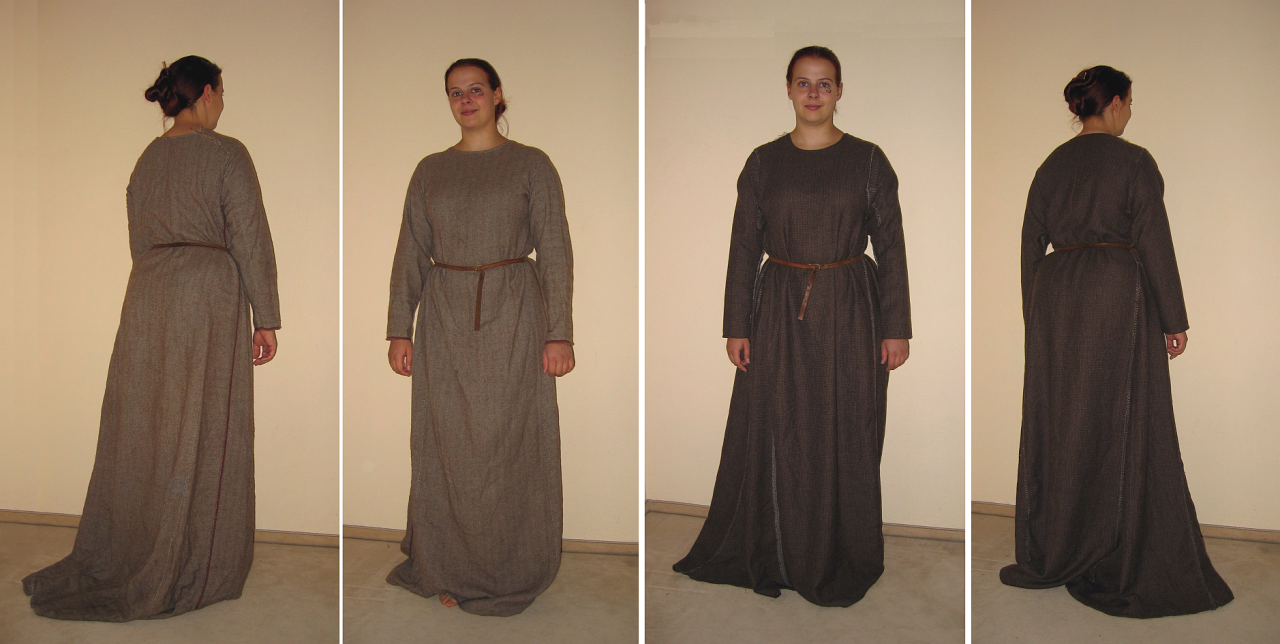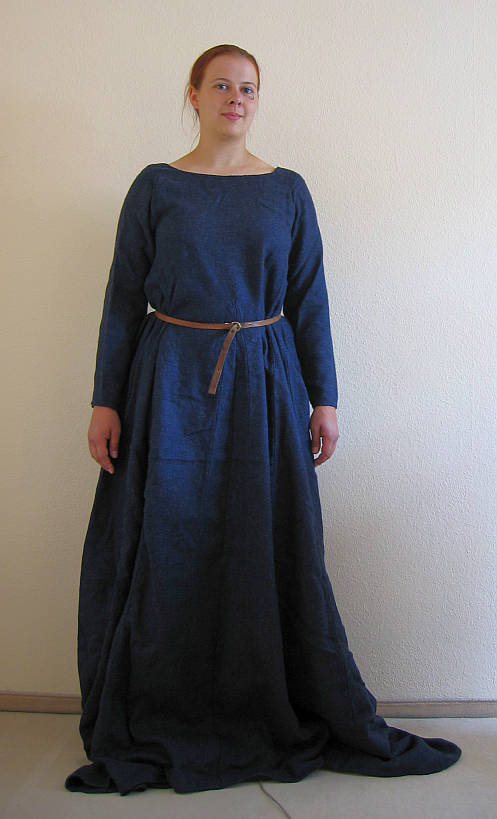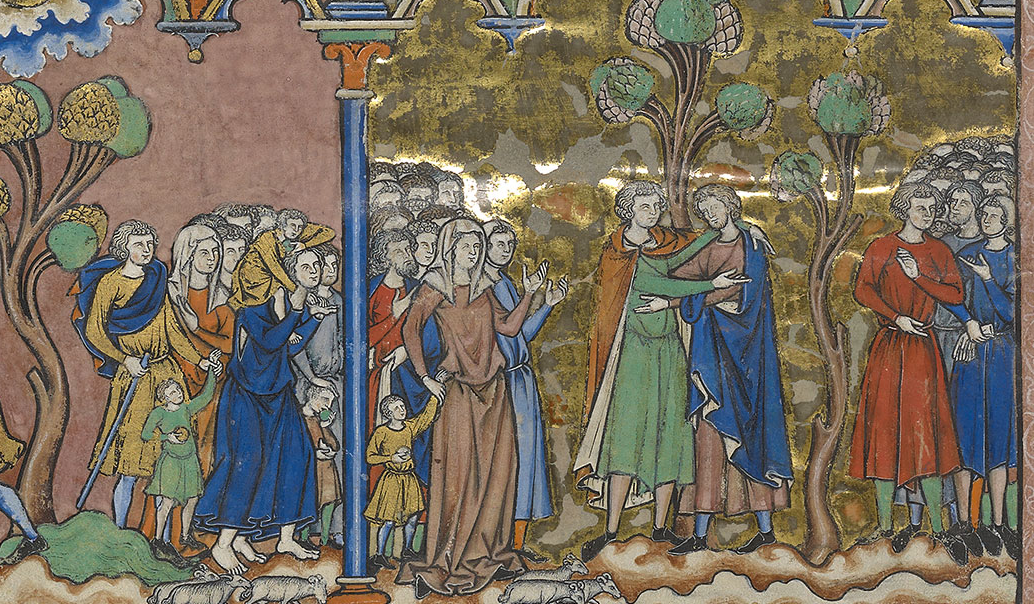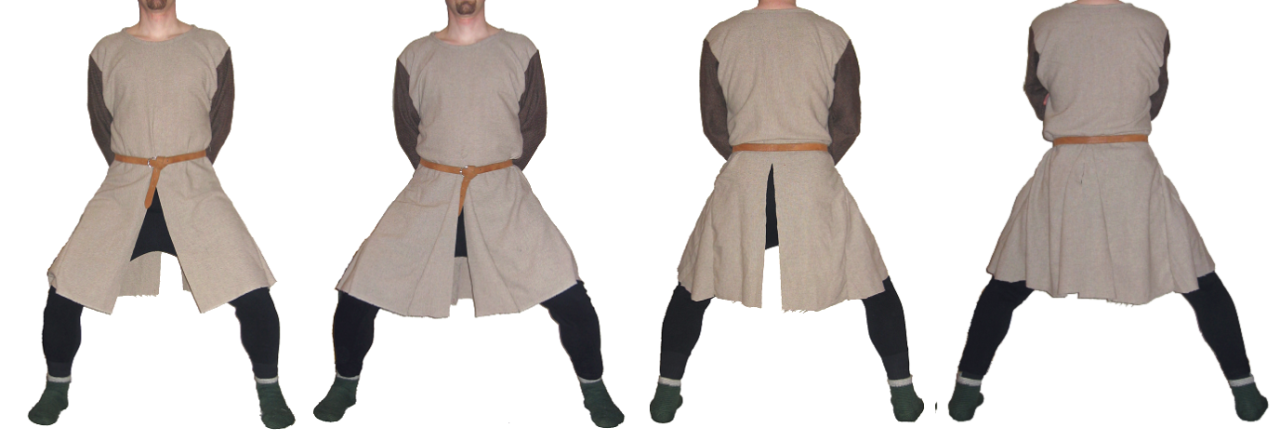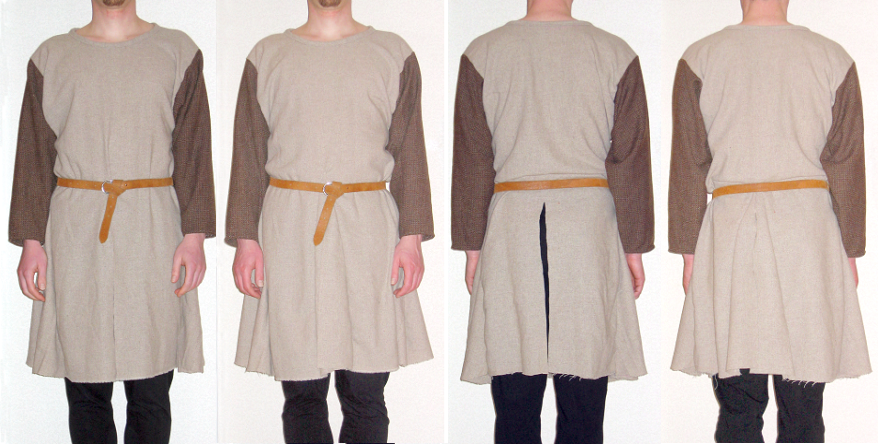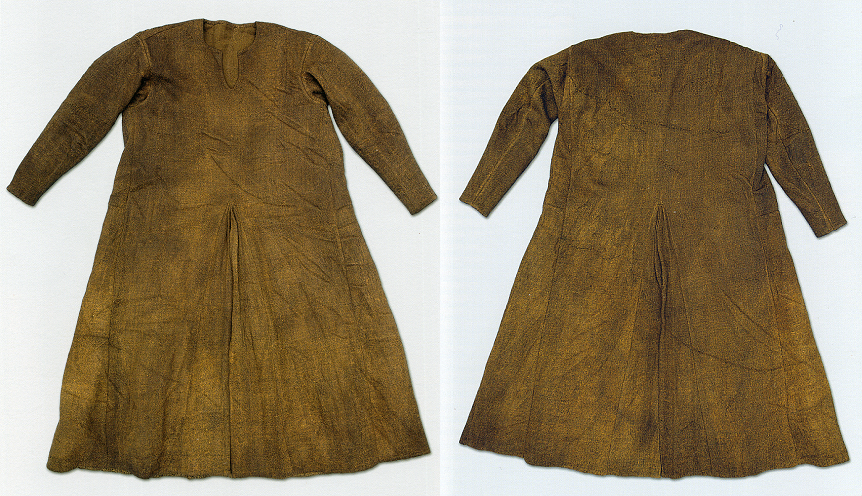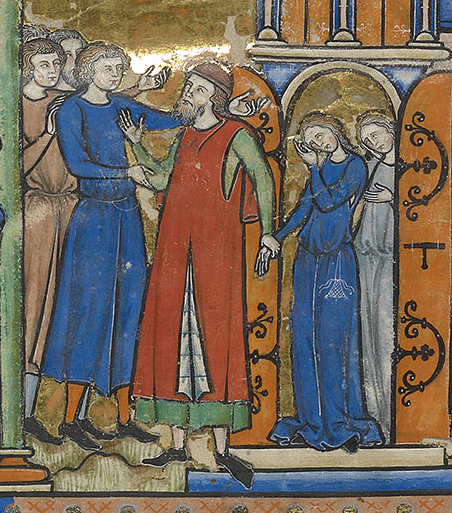Here's a little bit more about the Egtved project - which is sort-of-half finished now. Sort-of-half because there are the men's garments to be finished, and they might be more than half the complete work time altogether. I strongly suspect that, actually. (I also should probably get them their own tag, as it's not Egtved but Trindhøj, and it would be a little weird to list them under Egtved.)
So... the blouse is finished, and with that, the whole set of garments is ready to be photographed for a final documentation, then packed up and sent off to the museum. It's been very interesting to sew that blouse, and it's also interesting to wear (because of course I tried it on...)
I had gotten all ready to cut the piece, with the measurements taken off the Egtved documentation, and then that nagging feeling got the better of me, and I cut and sewed a mock-up first, using the original measurements. Turns out it was a good thing I did, because the Egtved girl was just that: a girl, aged 16 to 18 years according to estimates from her dental status. Meaning that she was not so tall, and also must have been quite slender, appropriate to her age.
She's estimated to have been 160 cm tall, and I am 163 cm. I can just fit into the mock-up blouse, though it takes a bit of wiggling to get in, and it's not wide enough to comfortably fit me, especially since my breast circumference is a bit more than the approximately 86 or so cm the original has. (It will squeeze in, as breasts are squishy to a good extent, but it's not really fitting well that way.)
That means the piece would not be wearable or try-on-able for a lot of people... and comparing it to the two other finds of similar blouses, the one from Egtved is by far the smallest. The other two have about 98 cm circumference in the torso part. So after checking back with the museum, we decided on using the Skrydstrup measurements as basis for the piece, making it large enough to fit a German size 42, approximately. I stayed with the slit-like neck opening, though.
The wool is somewhere between soft and scratchy to me, and that is also how the fabric feels when worn on the skin. When I was younger, I used to wear wool sweaters from Iceland on bare skin, though I might be somewhat, um, hardened against scratchy stuff. I'm also quite able to ignore a bit of scratchy feeling. What I'm not able to ignore is a neck opening that is close to the front of my neck, I find that really uncomfortable and irritating, so that would be one reason for me, personally, to not wanting to wear the blouse for an extended amount of time. (Or, if it were mine, I'd just make the neck opening a little bit deeper in the front.)
Sewing the garment was an interesting experience. The seams, according to documentation by Hald and Broholm, were about 1 cm wide, with the two layers of fabric simply overlapping and whip-stitched together from both sides. Now we only have a few threads per cm here, about 3 to maybe 4... which is not much to anchor stitching.
I solved this problem by stitching through the threads of the fabric instead of between them, which was easy to do with these large and relatively soft yarns. Made like this, the seams feel reliably sturdy.
Sewing the blouse was overall also the part that took least time - spinning the yarns, weaving the fabric, weaving the skirt, these all took a lot longer than the actual cutting (not much) and stitching.
Overall, I'm rather happy with all of this - even though, like always, there are quite a few compromises that had to be made...




